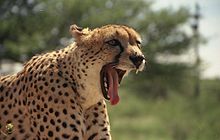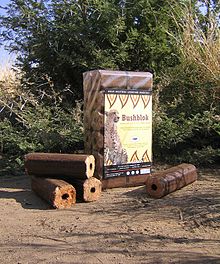- Cheetah Conservation Fund
-
Founded in 1990, the Cheetah Conservation Fund (CCF) has as its mission to be the world’s resource charged with protecting the cheetahs and ultimately ensuring its future on our planet. CCF will work with all stakeholders within the cheetah’s ecosystem to develop best practices in research, education and ecology and create a sustainable model from which all other species, including people, will benefit.
The CCF is based in Namibia, the country with the largest and healthiest population of cheetahs left in the world. Its Research and Education Centre is located 44 km. east of Otjiwarongo.
The non-profit organization has developed a diverse range of programs to scientifically study cheetah physiology, its behavior, habitat, prey species and human and wildlife conflict issues. The results of these scientific studies are disseminated internationally via publications and presentations, and the ever-expanding scientific database is utilized to develop strategic education and conservation programs.
Both within Namibia and worldwide there is now far greater awareness of the value of the cheetah within the ecosystem, and its endangered status. Encouragingly, increasing numbers of Namibian farmers (on whose land the majority of wild cheetah live) are implementing predator-friendly livestock management techniques.
Contents
The work of the Cheetah Conservation Fund
CCF's conservation and educational efforts are supported by on-going research used to develop policies and programs to sustain the cheetah population in Namibia and as a model for cheetah conservation programs in other countries such as Botswana, Kenya, South Africa, Algeria and Iran.
Cheetah biology
CCF staff conducts field research to gather data on distribution, behaviour, biology, population demographics, livestock/cheetah interactions, and health of cheetahs.
In order to influence national policy in favor of cheetah conservation, identify conservation priorities for cheetah, or assess the effectiveness of management action, CCF is currently developing indirect censusing techniques to provide consistent and reliable biological data. Building on long-term research on cheetah in Namibia, this project will field test and calibrate methods for cheetah censusing using camera-trap mark recapture and spoor (paw print) tracking. A cheetah genetics laboratory will provide support to the research and conservation endeavors necessary to save the cheetah, by using modern molecular techniques.
Cheetah ecology
The overall goal of the program is to enhance the long-term survival of the cheetah and other key indigenous wildlife species on Namibian farmlands by developing a habitat improvement program that is both ecologically sound and economically viable.
CCF looks at cheetah and other predator population sizes, habitat, prey density and cheetah movements, and behavior in the Waterberg Conservancy (total 2,000 km²) and the Otjiwarongo farming area (15,000 km²). The CCF Research Center Farms (total 250 km²) are extensively studied, including habitat and prey species.
The project also includes testing and monitoring methods of harvesting thickened (encroached) bush and design a scheme that is appropriate for farmland habitat and is beneficial to the landowners. CCF is developing an international market for bush-based products, Bushblok, that assures the long-term sustainability of appropriate levels of harvest. Within Namibia, CCF markets a firelog product as an affordable alternative to wood harvesting. Based on the results of the pilot project already conducted, habitat restoration efforts can be scaled up to restore cheetah habitat on an ecologically appropriate scale. This would also provide a long-term income-generating, self-sustaining conservation development project for the CCF.
The program adds to and maintains an extensive physiological database and a Genome Resource Bank.
Human effects on the cheetah
The CCF investigates non-lethal predator mitigation to eliminate the need for ranchers to kill cheetah, and issues relating to cheetah in captivity. Aspects of this program include:
- Research on the effective use of swing gates, the relocation of problem cheetahs, and the implementation of predator-friendly farming methods, such as the CCF's Livestock Guarding Dog Program, which has provided an efficient alternative method to reduce livestock losses to cheetahs and other predators. Greater awareness of the program has also led to an increase of requests by farmers who experience livestock predator problems to provide them dogs.
- The creation and management of long-term conservation strategies for the cheetah worldwide.
- CCF conducts integrated management courses to train and empower then on different aspects related to farming (i.e. sustainability) as well as on how to live with predators, particularly cheetahs. CCF also creates and disseminates education materials worldwide.
References
- SSP Fact Sheet on the AZA website.
See also
External links
Categories:- Acinonyx
- Conservation projects
- Conservation in Namibia
- 1990 establishments
- Otjiwarongo
Wikimedia Foundation. 2010.





